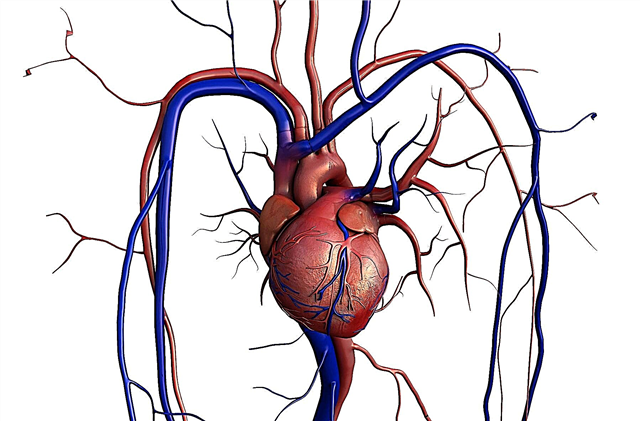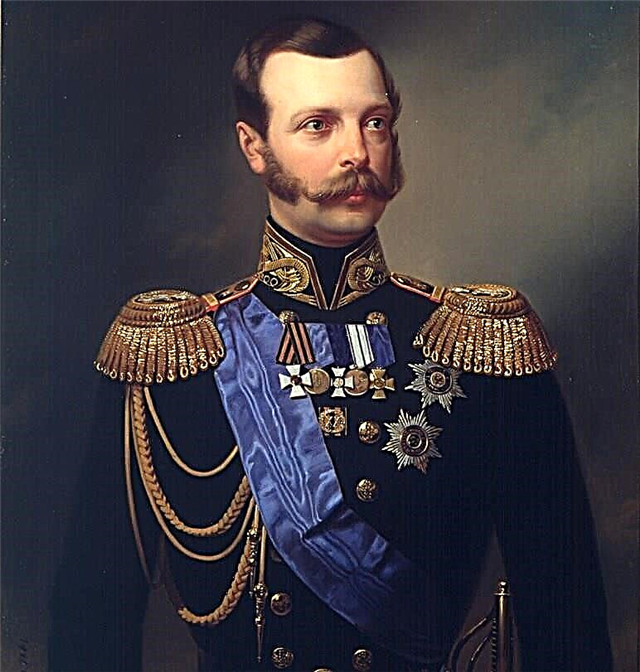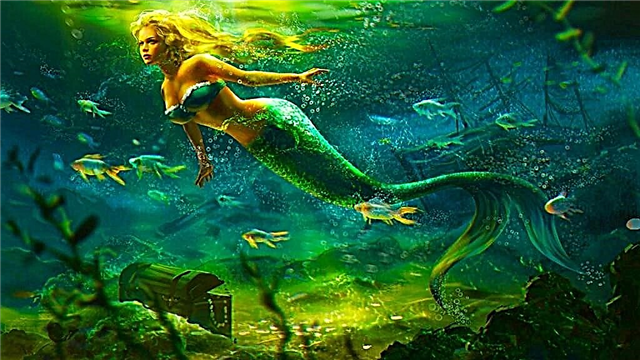Charles Robert Darwin (1809-1882) - English naturalist and traveler, one of the first to come to the conclusion and substantiate the idea that all types of living organisms evolve over time and descend from common ancestors.
In his theory, a detailed exposition of which was published in 1859 in the book The Origin of Species, Darwin called natural selection the main mechanism for the evolution of species.

There are many interesting facts in Darwin's biography, which we will tell about in this article.
So, here is a short biography of Charles Darwin.
Darwin's biography
Charles Darwin was born on February 12, 1809 in the English city of Shrewsbury. He grew up in the family of a wealthy doctor and financier Robert Darwin and his wife, Susanne. He was the fifth of six children with his parents.
Childhood and youth
As a child, Darwin, along with his mother and brothers, was a parishioner of the Unitarian Church. When he was about 8 years old, he started going to school, where he became interested in natural science and collecting. Soon his mother passed away, as a result of which the spiritual education of children was reduced to zero.
In 1818, Darwin Sr. sent his sons, Charles and Erasmus, to the Anglican School of Shrewsbury. The future naturalist did not like going to school, since nature, which he loved so much, was practically not studied there.
With fairly mediocre grades in all disciplines, Charles gained a reputation as an incapable student. During this period of his biography, the child became interested in collecting butterflies and minerals. Later, he discovered a great interest in hunting.

In high school, Darwin became interested in chemistry, for which he was criticized by the headmaster of the gymnasium, who considered this science meaningless. As a result, the young man received a certificate with low marks.
After that, Charles continued his education at the University of Edinburgh, where he studied medicine. After 2 years of study at the university, he realized that he did not like medicine at all. The guy began to skip classes, and started making stuffed animals.
Darwin's mentor in this matter was a former slave named John Edmonstone, who at one time traveled through the Amazon as an assistant to the naturalist Charles Waterton.
Charles's first discoveries were in the anatomy of marine invertebrates. He presented his developments in the Plinievsky student society. At the same time, the young scientist began to get acquainted with materialism.
Darwin took pleasure in taking courses in natural history, thanks to which he acquired an initial knowledge in the field of geology, and also had access to the collections that are in the university museum.
When his father found out about Charles's neglected studies, he insisted that his son go to Christ College, Cambridge University. The man wanted the young man to receive the ordination of a clergyman of the Church of England. Darwin decided not to oppose his father's will and soon became a college student.
Having changed educational institution, the guy still did not feel much zeal for learning. Instead, he loved gun shooting, hunting, and horseback riding. Later he became interested in entomology - the science of insects.
Charles Darwin began collecting beetles. He became friends with botanist John Stevens Henslow, learning from him many interesting facts about nature and insects. Realizing that he would soon have to pass final exams, the student decided to seriously concentrate on his studies.
Curiously, Darwin was so good at mastering the material he had missed that he was ranked 10th out of 178 who passed the exam.
Travels
After graduating from university in 1831, Charles Darwin set out on a voyage around the world on the Beagle. He participated in a scientific expedition as a naturalist. It is worth noting that the journey lasted for about 5 years.
While the crew members were engaged in cartographic research of the coasts, Charles collected various artifacts related to natural history and geology. He carefully wrote down all his observations, some of which he sent to Cambridge.
During his voyage on the Beagle, Darwin collected an impressive collection of animals, and also described the anatomy of a number of marine invertebrates in a laconic form. In the region of Patagonia, he discovered the fossilized remains of an ancient mammal megatherium, which outwardly resembles a huge armadillo.
Near the find, Charles Darwin noticed quite a few modern mollusk shells, which indicated the relatively recent disappearance of megatherium. In Britain, this discovery aroused great interest among scientists.

Further exploration of the stepped zone of Patagonia, revealing the ancient strata of our planet, prompted the naturalist to think about erroneous statements in Lyell's work "about the constancy and extinction of species."
When the ship reached Chile, Darwin had a chance to personally observe a powerful earthquake. He noticed how the earth rose above the sea surface. In the Andes, he discovered shells of mollusks, as a result of which the guy suggested that barrier reefs and atolls are nothing more than a consequence of the movement of the earth's crust.
In the Galapagos Islands, Charles saw that the native mockingbirds had a number of differences from those found in Chile and other regions. In Australia, he observed kangaroo rats and platypuses, which were also different from similar animals elsewhere.
Struck by what he saw, Darwin even stated that two Creators allegedly worked on the creation of the Earth. After that, the "Beagle" continued its journey in the waters of South America.
During the biography of 1839-1842. Charles Darwin set out his observations in scientific papers: "Diary of Investigations of a Naturalist", "The Zoology of Voyage on the Beagle" and "Structure and Distribution of Coral Reefs."
An interesting fact is that the scientist was the first to describe the so-called "penitent snows" - peculiar formations on the surface of snow or firn fields in the form of pointed pyramids up to 6 m high, from a distance similar to crowds of kneeling monks.
After the end of the expedition, Darwin began searching for confirmation of his theory regarding species change. He kept his views secret from everyone because he realized that with his ideas he would criticize religious views on the origin of the world and everything that exists in it.

It is worth noting that despite his guesses, Charles remained a believer. Rather, he was disenchanted with many Christian dogmas and traditions.
Later, when the man was asked about his religious beliefs, he stated that he was never an atheist in the sense that he did not deny the existence of God. Rather, he considered himself an agnostic.
The final departure from the church at Darwin happened after the death of his daughter Anne in 1851. Nevertheless, he continued to help the parishioners, but refused to attend the services. When his relatives went to church, he went for a walk.
In 1838, Charles was entrusted with the post of secretary of the Geological Society of London. He held this post for about 3 years.
Doctrine of descent
After traveling around the world, Darwin began to keep a diary, where he divided plant varieties and domestic animals by classes. There he also wrote down his ideas about natural selection.
The Origin of Species is the work of Charles Darwin in which the author proposed a theory of evolution. The book was published on November 24, 1859, and is considered the foundation of evolutionary biology. The main idea is that a population evolves over generations through natural selection. The principles described in the book got their own name - "Darwinism".
Later Darwin presented another notable work - "The Descent of Man and Sexual Selection." The writer put forward the idea that humans and monkeys had a common ancestor. He conducted comparative anatomical analysis and compared embryological data, thus trying to substantiate his ideas.
The theory of evolution gained great popularity during Darwin's lifetime, and does not lose its popularity even today. However, it should be noted here that it, as before, remains only a theory, since it has many dark spots.
For example, in the last century one could hear about finds that allegedly confirmed that man descended from a monkey. As evidence, the skeletons of "Neanderthals" were cited, which resembled certain creatures, simultaneously similar to primates and humans.
However, with the advent of modern methods for identifying the remains of ancient people, it became clear that some bones belonged to humans, and some to animals, and not always monkeys.
Until now, there are heated disputes between supporters and opponents of the theory of evolution. With all this, as defenders of the divine origin of man, it is not possible to prove creationand activists of origin from monkeys unable to substantiate their position in any way.

In the end, the origin of man remains a complete mystery, no matter how many different points of view are covered by science.
It should also be noted that supporters of Darwinism often call their theory science, and religious views - blind faith... Moreover, both of them are based on statements taken exclusively on faith.
Personal life
Charles Darwin's wife was a cousin named Emma Wedgwood. The newlyweds legalized their relationship in accordance with all the traditions of the Anglican Church. The couple had 10 children, three of whom died in childhood.
An interesting fact is that some of the children were susceptible to illness or were weak. The scientist believed that the reason for this was his kinship with Emma.
Death
Charles Darwin died on April 19, 1882 at the age of 73. The wife outlived her husband by 14 years, having died in the fall of 1896.
Darwin Photos

















